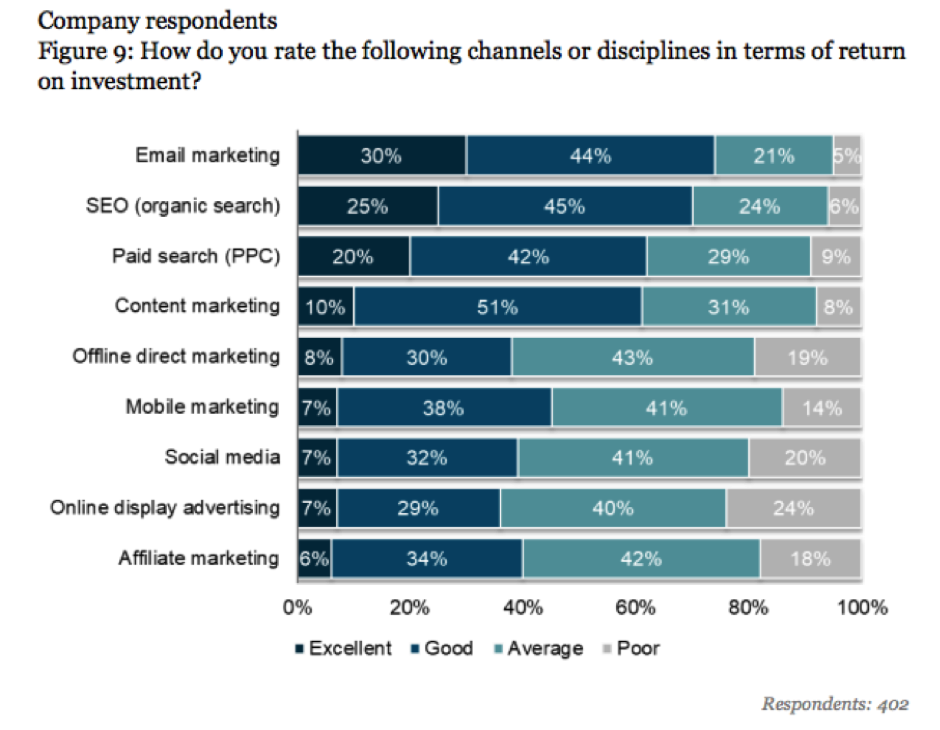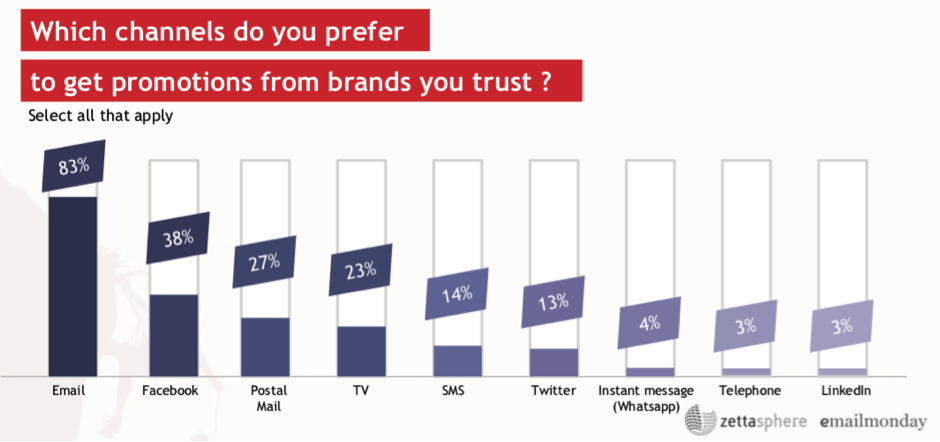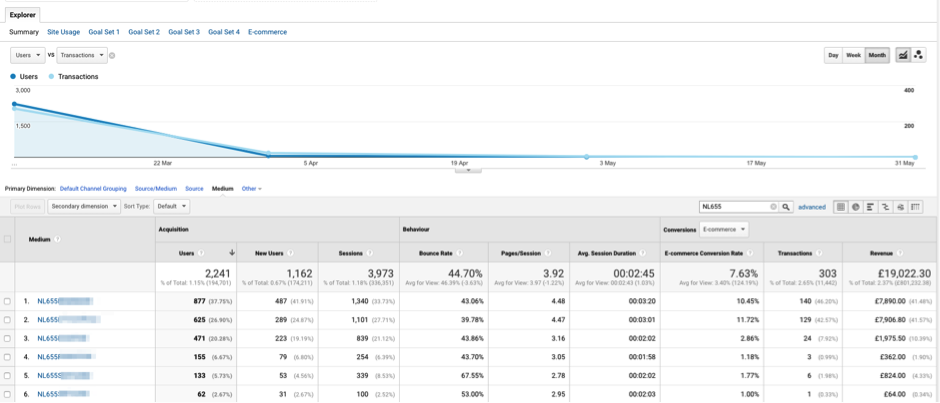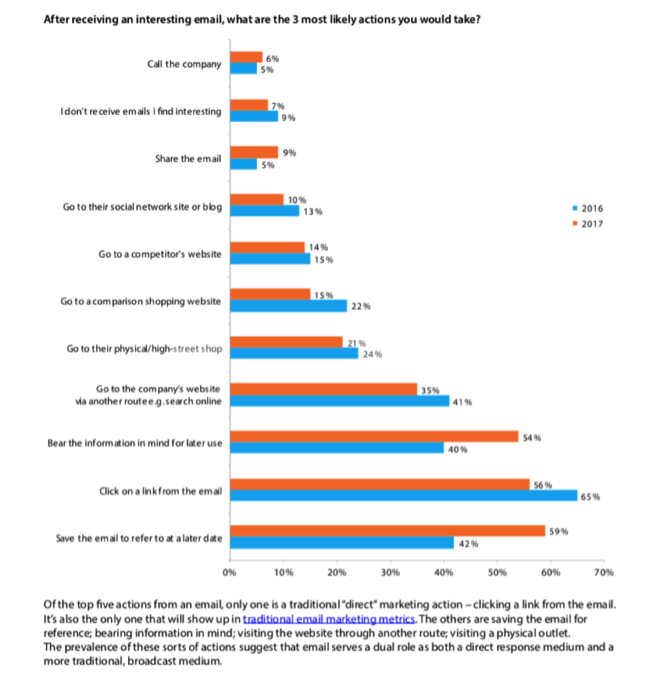The Challenges of Email Marketing Attribution
Email marketing attribution is a problem as old as email, and it’s a huge topic – much too big to fully address in a simple blog article. And, sadly, I don’t have all the answers. In fact, I’m not sure that anyone does.
But it is a topic that deserves much more attention. The more aware we are of it as a problem that holds us email marketers back from delivering the valuable emails that our consumers want, the more likely we will work individually and collectively toward an answer.
My article will address a couple of small changes in attribution that might help your email program earn the credit it deserves for driving sales, revenue and other goals.
Email marketing delivers the goods
As seen in the chart below from Econsultancy’s Email Marketing Census 2018, email marketing delivers the highest ROI and has done for years, even though email marketing generally is under-attributed.

We might not realise it, but we all struggle daily with this problem. The consequences of under-attribution leads to under-resourced, under-appreciated and under-budgeted email departments.
(With email delivering the highest ROI, it should get the highest budgets – right? Wrong! However, that’s a problem for another day and a different article.)
In a recent consumer report from emailMonday and Zettasphere, consumers overwhelmingly chose email as their preferred channel to receive promotions. This of course helps to explain why the ROI is so high, but it also drives home the fact that we need to ensure attribution is accurate and budgets are being allocated correctly. The reason being, consumers have signed up to our offers, deals and news with certain expectations, and we have an obligation to deliver upon these expectations. And, for this, we need budget.

First things first when it comes to email marketing attribution
The first step to improving your measurement and attribution when it comes to campaigns is to ensure you’re measuring them for the appropriate length of time.
Many marketers I’ve worked with tend to go with gut instincts. Or, they sometimes let practicality rule their decisions. They often will pay a hefty price in the form of under-reporting.
Whilst performing an audit for one of our clients, we found they had been under-reporting their email marketing campaigns, as they had based their reporting period on a combination of gut instincts and practicality.
Recorded Measurement (based on Google Analytics data)
Campaign sent: 8th March 2018
Date range tracked: 8 March – 11 March 2018. 4 days (Thursday – Sunday)
Transactions: 114
Users: 1,294
Revenue: £8,326
Now, let’s explore the full reach of this campaign (based on Google Analytics data)
Date range: 8 March – 31st May 2018
In March: There were 2,232 users with 272 transactions
In April: There were 67 users with 25 transactions
In May: There were 18 users with 6 transactions
Revenue: £19,022.30
By recording the success of this campaign after only 4 days, the brand under-recorded it by 128%!
This shows that the brand needed to measure each campaign way beyond 4 days after the campaign was sent to ensure it fully measured the campaign’s success.

3 steps to ensure you’re measuring correctly
- Ensure your analytics software is tagged correctly to track your email campaigns and programs.
- Dive into your historical reports, and identify a data-informed cut-off point. This will vary by brand or, potentially, by product if your products vary in the length of their consideration stages.
- Measure and report to this period and not to a period that was created because it seemed reasonable. Use data to set this measurement period.
Measuring success doesn’t end with campaigns or clicks
Email marketers are campaign-oriented. So, we tend to think only in campaign terms. This can result in measuring only campaign to campaign and adding these up to provide the total revenue that email is driving.
To ensure an accurate measurement, also measure success by the email channel as a whole over a longer period. This will take these “long tail” sales into account.
However, as advisable as all the above is, it still bases success only on the click. As we’re about to discover, the click doesn’t tell the whole story.
From the mouth of the marketer
One day, one of our online-only retail customers told me about one of their weekly channel meetings, in which the Search Manager reported a dip in all searches (both organic and paid) for the previous Tuesday.
The manager said a spike is normal on Tuesdays in both paid and organic searches but could not account for the reason. However, on this particular Tuesday, the spike didn’t happen, and the manager could not explain why.
At this point, the Email & eCRM Manager spoke up and explained the email team normally sends an email on Tuesday but, for technical reasons, was not able to that week. This meant the team inadvertently performed a hold-out test.
This serendipitous event helped them see how email drives traffic and sales that were being wrongly attributed to other channels hence the email marketing attribution was incorrect.
This story is not an anomaly. Rather, it’s typical, and I expect we’ve all experienced or heard stories similar to this
Email drives consumers to other channels
I had the pleasure of serving on the UK DMA’s Email Marketing Council between 2004 and 2014. During this period we launched the Consumer Tracking Report, and every year I look forward to receiving this valuable insight into the consumer’s usage of email and data, which includes the incredibly revealing chart below.

Out of the top 8 actions a consumer can take with an email, most likely only one or, possibly, two of them will be attributed to email.
And, as we can see, the action on which we generally base our attribution – clicking through the email – is not the main action that consumers take when they receive an email they like. “Saving the email to refer to at a later date” is the most popular action. We previously saw evidence of this with those consumers who chose the save the email for over a month before actioning it, and it was obvious from the conversion rate that their level of intent was very high.
In the previous 6 years of this report, clicking through the email was consumers’ most popular action. This is no longer the case. Consumers are constantly changing how they interact with and use email.
Keep on top of consumers habits & keep updating our measuring of success accordingly
As marketers we will be successful only when we account for the changing behaviours of consumers and adjust our marketing accordingly. This is also true of measuring success. If we do not factor these changing consumer habits into our reporting, then we might well under-report email’s success and wrongly attribute success to other channels. This has huge implications, such as investing budget in channels that do not perform as well as email but which can be tracked more easily than email. This can result in reduced performance and revenue for the business as a whole.
Let’s start talking about our challenges and sharing our wins so that we can all learn from each other.
If you are struggling to increase your budget due to flawed email marketing attribution, please contact us to discuss how we can help you.
Interested in finding out more? Check out how the awesome team at Holistic Email Marketing can help take your email programme to the next level.
Originally published on Only Influencers

